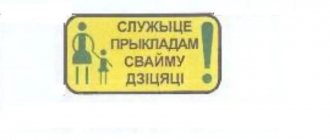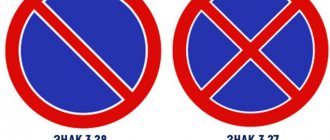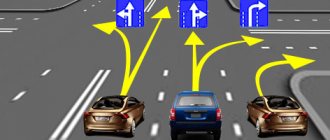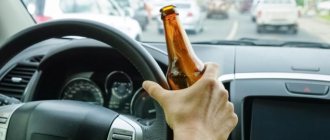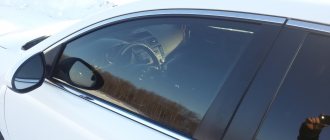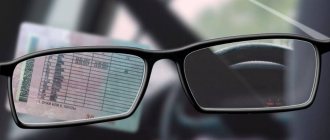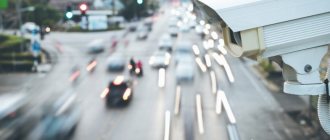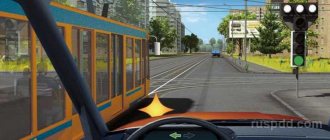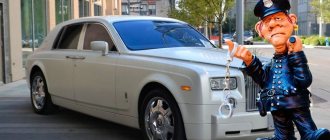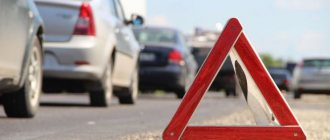Description
Like most warning signs, 1.13 and 1.14 are designed in the form of a triangle with a red edge. These signs are designed to attract the attention of drivers with bright colors and warn of possible danger. On road signs indicating a descent or ascent, the slope of the road with percentages is symbolically depicted.
The slope is calculated as the ratio of the height of the climb and the distance traveled, based on a 100-meter segment of the path. Indicated as a simple fraction or as a percentage in geodesy; On road signs, the steepness of slopes and inclines is indicated only as a percentage.
Example: in front of us is a sign “Steep climb” indicating 12%. If we have this opportunity and look at the road from the side, we will see that the angle of inclination in this place is approximately 12 degrees relative to the horizon. If you travel a distance of one kilometer on a road with a 12% slope, you will rise or descend 120 meters.
In accordance with the prescription of paragraph 11.4 of the set of traffic rules, it is strictly forbidden to overtake at the end of the climb.
How to remember the signs of descent and ascent
It is not difficult to remember the seemingly identical signs of descent and ascent, since they are both eye-catching triangles with a red border and a white field inside it. It shows in black that the road goes up (1.14) or down (1.13), and above the line there is a number and a percentage symbol. Schemes of elevation or descent, shaded in dark, have the form of an irregular triangle, the right angle of which is located above the two acute ones.
It is more difficult to distinguish the characters from each other, but there is a good way to do this:
- While driving, look at it, determining where the lower right corner of the triangle is and where the left corner is relative to the driver. That is, to do this you need to be facing the sign, and not turn your back.
- See in which direction the black line of the diagram goes. If it is directed from the lower right corner of the figure up and to the left, it is a sign of descent. Going from the left to the right edge of the triangle also upward means that in front of the driver is a symbol of ascent.
There is an easier way to distinguish them by paying attention to the position of the numbers and the percentage symbol relative to each other and the black line. At 1.13 the number is higher. In 1.14 it is located below the “%” icon.
The percentages indicated on both symbols demonstrate the degree of deviation of the road from the horizontal level over 100 m. That is, how much the height on the rise has increased from the starting point over this distance. The same is true for descent, only we are talking about descent. A section with a rise can be represented in the form of a right triangle, in which the upward road is the hypotenuse.
The sign indicates the tangent of this figure, that is, the height divided by the length and multiplied by 100.
The quality of adhesion between the car’s wheels and the surface when driving uphill or downhill depends on this value. The higher the mountain, that is, the number on the sign, the lower the coefficient. This means that there is a greater chance that if the speed and gear are chosen incorrectly, the car will fly down or, at best, remain in place.
Weather conditions also affect this. A climb that is accessible on dry asphalt may be insurmountable in rain or ice. In the latter case, the number 10% on the sign becomes dangerous. After all, it means that the coefficient of adhesion of tires to icy roads is only 0.1, and this is very little. For trouble-free driving on a flat surface, it is 0.7.
We recommend reading about the reversal rules. From the article you will learn about the types of turns in a car, the rules for turning at intersections, prohibited places for turning, and fines for violation. And here is more information about the punishment for violating the rules of overtaking.
Symbol 1.14 rarely attracts the attention of drivers. You can get away with this if there are few cars on the road and it is dry and the incline is fairly gentle. But in bad weather or when there is a large flow of traffic, or a narrowing area, strict compliance with the requirements of the sign can save you from an accident.
Explanation
Often drivers do not immediately understand which sign is in front of them: a steep descent or an ascent. Especially if the slope is small or it is snowing and visibility is difficult.
To quickly navigate the situation, use the following simple tips:
1The principle of reading road signs is no different from reading text, that is, from left to right. By moving your eyes from left to right, you can easily understand whether this road sign means up or down.
2Using the palm of your left hand, visually repeat the slope of the road shown on the sign. If the fingers point down, this means that there is a steep descent ahead, but if on the contrary, we are going uphill.
What do percentages mean on a white background?
It took me a long time to get my head around, if the numbers on the signs mean the angle of inclination of the road surface, then why isn’t it indicated in degrees? It would be more familiar to everyone. The fact is that the slope may not be the same throughout the entire descent or ascent from the mountain. It is not possible to write a definite degree; it may differ. Let’s say that on the first segment of 10 meters it is 5 degrees, on the second segment of 20 meters it will be 15 degrees, so what angle of inclination in degrees should be indicated on the sign?
To avoid confusion, we decided to indicate the curvature of the road slope as a percentage. They mean that for every 100 meters of road traveled, after the start of a dangerous section, you will rise or fall by 12 meters, if the steep descent or ascent sign indicates 12 percent.
That is, if you see a “steep climb” sign ahead with the numbers 12%, this means that after the start of the dangerous section indicated by this sign, you will travel a distance of 1 kilometer, then you will rise 120 meters higher, relative to the starting point.
This is interesting: What are the dangers of installing upside down license plates on a car?
Coverage area
Important!
The main task of a group of warning signs is to signal possible unforeseen situations that may arise along a given section of the route. Therefore, it is logical to place them at some distance from the dangerous area so that the driver can concentrate and think through his further actions.
Based on this, signs 1.13 and 1.14, like most others, are placed 50-100 meters before the start of a steep descent or ascent within populated areas and 150-300 meters outside the city.
Road signs can be combined with information plates:
- 8.1.1 indicating how many meters are left to the dangerous section of the road;
- 8.2.1 with information about how many meters the dangerous section of the roadway will last.
In a situation where, after a steep descent, the road immediately begins to rise, sign 1.14 will be placed directly at the very beginning of the ascent.
Nuances
PARKING SCHOOLParallel parking leaving the parking lot if the car is jammed
Alupka has no synonyms, since it is a city located in Crimea. It is worth considering that sleep for a motorist who is on the road for several days is as important as the availability of water and food
Otherwise, attention is scattered and there is a possibility of becoming the culprit of an accident. Install the sign in some situations and in populated areas
In this case, the sign is located at a distance of 50 to 100 meters from the place of danger. When we are talking about out-of-bounds territory, the distance increases to 300 meters.
In addition, nearby can be installed:
- a sign reflecting the distance to the object (reflects the number of meters to a dangerous descent or ascent);
- signs are also placed that help to navigate how long such a section of the canvas will last.
It is worth drawing the attention of car enthusiasts to what is reflected as a percentage on the plate, however, in fact it should be considered as degrees. For example, when the plate displays the number 100 with a percentage, this indicates a slope of 45 degrees
These designations are used because the adhesion of the automobile surface to the road surface is required to indicate. If the road is wet, then this coefficient will be less than 0.1. When the driver sees 10 and percentages on the sign, he must keep in mind that his experience and expensive tires will not help him stop on the descent in this situation. When a person decides to leave a car on such a slope, he should remember that after rain or other types of precipitation there is a high probability that the vehicle will roll down on its own.
There is no need to reduce the significance of the signs in question, since in practice there are often cases when cars roll down slopes on their own. In addition to these provisions, it is necessary to take into account that depending on the weather outside, there is a change in grip on the road. In the cold season, in particular when it is snowing and there is wet ice on the road, the grip becomes less than 0.1. This, in turn, indicates the extreme danger of those descents and ascents in front of which there is a sign with 10 or more percent. In some situations they are completely insurmountable.
When the descents are long, it is most effective to brake using the engine. That is, the steeper the slope, the lower the gear you should choose
You also need to pay attention to the fact that drivers going up the slope have an undeniable advantage over those going down. This means that the person descending must, if necessary, brake and let the oncoming car pass.
Particular attention should be paid to signs when there is bad weather or poor visibility on the road.
The traffic rules provide for a lot of different signs that help motorists find their way around unfamiliar terrain in a timely manner. Signs informing about the presence of sharp descents on the road and are considered extremely important and meaningful icons.
Comments
If vehicles pass in places where signs 1.13 and 1.14 are in effect, it is worth remembering that the one moving uphill has priority in traffic. This rule is regulated by paragraph 11.7 of the traffic rules.
Imagine the situation: you are a car driver and you are driving down a steep slope. There is an obstacle in the form of a landslide ahead, which completely blocks the path of an oncoming car moving uphill. The favorable outcome of this situation depends on your competent actions. According to the interpretation of clause 11.7 of the traffic rules, you must give priority right of passage to a car that is moving uphill, despite the fact that the obstacle is located in its lane.
This advantage was established due to the fact that stopping on an ascent and then moving up a hill is much more difficult than performing the same actions when descending: the car may roll back or stop the engine.
An obstacle is a stationary obstacle that has arisen on the way and impedes further movement along a given lane of the roadway. This could be a faulty vehicle, road damage, foreign objects, and much more. The traffic jam is not an obstacle.
Steep descent
Tip 1 How to determine that the battery is charged Tip 2 How to determine whether the battery is charging
Steep descent or sign 1.13 Steep ascent, oncoming passing must be carried out in accordance with paragraph 130 of the Rules: the driver of a vehicle moving downhill must give way to a vehicle going uphill.
Steep descents and ascents of the curve characterize the rapid movements of the assistant on the well working platform (for example, ascent and descent onto the rotor table); areas of pulsating change - periods of intense motor (physical) activity.
A steep descent warns of the presence of a descent with an increased danger for movement. The magnitude of the slope is indicated on the sign as a percentage (for safety measures when driving on steep slopes, see Chapter.
Steep descents are dangerous because they develop an unacceptably high speed, at which the car can lose stability and capsize.
| Steep descent sign. The sign below the sign indicates the length of the descent. |
The Steep Descent sign (1.12) (Fig. 15) is installed in front of a dangerous section of the road. It warns drivers about an upcoming descent with a slope that exceeds the norm for this category of road.
On steep descents, the clutch and gear must be engaged. It is prohibited to use direct transmission during long descents.
| Road train for transporting heavy cargo. |
On steep descents and ascents, it is necessary to use a second vehicle to brake or tow.
On a steep descent it is much more difficult to stop the tractor than on a horizontal section of the road, since the force of gravity of the tractor increases its braking distance. On a road slope, in front of which there is a sign 1.13, where oncoming passing is difficult, the driver of a tractor moving downhill (on a descent) must give way to a vehicle moving uphill.
On steep descents, it is recommended to use combined braking. It is not recommended to use the parking brake on descents.
On steep slopes of mountain roads, driving with the clutch or gear disengaged is prohibited.
When driving down a steep descent, be sure to brake with the engine, having engaged in advance the gear that was required. If necessary, it is necessary, without waiting for the vehicle speed to increase, to additionally slow down the vehicle with the foot brake.
| Scheme of transhipment of bulk cargo and pig about with pprpgtyaplrnya GURMya PRPR.| Application of brake flaps. |
If the angles are significant (steep descent) and the inclined plane is long, the speed and acceleration of the loads being handled can reach values exceeding the permissible ones. In particular, a similar situation arises when using gravitational devices for lowering packaged cargo from the upper floors to the lower ones. To reduce the speed of loads moving down an inclined plane, various methods of braking them are used in practice. The choice of method and technical means of braking is influenced by a number of factors: parameters of the gravitational device, permissible values of static and dynamic loads on containers and cargo, material and geometric parameters of cargo, requirements for the reliability of the reloading process.
Fines
Failure to comply with the requirements of road signs entails an administrative penalty. A detailed table of fines and explanations can be found on the traffic police website.
12.15 Part 1 Violation of the rules of oncoming traffic will entail the imposition of an administrative fine in the amount of 500 rubles.
12.15 Part 1 Incorrect positioning of a vehicle on the roadway or oncoming traffic lanes entails a fine of 1,500 rubles.
12.14 Part 3 Failure to comply with traffic rules and ignoring the rule to give way to a vehicle enjoying the right of priority, except for the cases provided for in Part 2 of Article 12.13 and Article 12.17 of the current rules - a warning or a fine of 500 rubles.
Warning sign for raising the road
If we consider a warning sign such as 1.14 (“Steep climb”), the car owner should remember that a relatively dangerous and steep road awaits him ahead, rising a certain distance upward. Driving on steep descents and ascents is usually difficult, and the driver must be warned about the approaching dangerous section of the road. The main thing that is required of every motorist is to maintain safety, trying to reduce the speed to reasonable limits and choose a more acceptable gear that will make it easier to overcome the existing rise.
Designation 1.14 can usually be found in several cases:
- near (about 70 m) a dangerous section of the road, which is located near a village or city;
- not far (about 200 m) from the sharply upward road, located far from the populated area.
Road sign “Steep climb”
The “Steep climb” sign is most often seen by car owners in conjunction with special signs, in particular with the designations 8.1.1 and 8.2.1. The first of the signs, as a rule, indicates to the driver the exact distance to the section where the road begins to climb uphill, and the second indicates how long such a section of the journey will be.
In addition to all of the above, a driver planning to drive along a dangerous section of the road must remember that the car that will move up will have an advantage for movement.
Road sign requirements 1.14
The “Steep Hill” sign warns the driver that the vehicle may roll back spontaneously if appropriate measures are not taken. The process of overcoming steep climbs is associated with emotional stress for the driver, during which he must choose the correct estimate of speed and maintain the correct distance.
A big mistake many drivers make with automatic transmissions is backing up the cars in front. Not all drivers have the skill to move uphill without stalling or rolling away. As a result, the rolled vehicle hits the one coming from behind.
The question arises: who will bear responsibility for the collision if the car behind did not keep its distance, but the driver in front drove in?
The situation will be ambiguous. It will be possible to prove the driver’s innocence if there is a DVR, if there is none, and also, as a general rule, the culprit is always in the back. Therefore, a driver who does not use a safe distance may pay with his finances if he
Liability for violation of sign 1.14
When driving along an incline, a common violation among drivers who do not comply with traffic regulations is ignoring the requirements to give way to drivers who have the right of way. A sanction in the form of a warning or a fine of 500 rubles will be imposed on the violator of traffic rules under Part 3 of Art. 12.14 Code of Administrative Offenses of the Russian Federation.
A driver who irresponsibly leaves his car on an incline may receive an administrative penalty in the form of 2,000 rubles under Part 4 of Art. 12.19 Code of Administrative Offenses of the Russian Federation.
Also, a driver whose brake lights do not work may be held liable under Part 1 of Art. 12.14 of the Code of Administrative Offenses of the Russian Federation in the form of a warning or a fine of 500 rubles, since the vehicle behind cannot recognize the driver’s actions in making a stop.
In icy conditions, stopping on a steep slope can cause a traffic accident.
Road sign 1.13 “Steep descent” warns that there is a steep descent ahead.
To distinguish this sign from the Steep Ascent sign, you need to use your left hand. Place your left palm on the slanted line above which the percentages are drawn. If the fingers of the palm are looking down, then there is a steep descent ahead, if up, then there is a steep climb.
Of course, you can visually determine where the descent is and where the ascent is. But not always. From personal experience, I will say that this sign is very useful during heavy snowfall, rain, or when the fog is so dense that even the tip of the hood is not visible. Then you don’t get your bearings on the road at all and you get the feeling that you’re driving across a field with no ups or downs. And only road signs can really help.
There is a small feature on the descent that is best mentioned right away. Pay attention to the image.
Let's say you are the driver of a car going down a mountain. Ahead you see an oncoming car, and you also notice that there is a small collapse in the oncoming lane, through which the oncoming car will not pass; it will have to enter your lane. So, the driver on the rise has an advantage
and you must give way to him, because he is going uphill.
Warning signs 1.13, 1.14 outside populated areas are installed at a distance of 150 - 300 m, in populated areas - at a distance of 50 - 100 m before the start of the dangerous section. If necessary, signs can be installed at a different distance, which in this case is indicated on the sign.
Signs 1.13 and 1.14 can be installed without plate 8.1.1 immediately before the start of a descent or ascent, if the descents and ascents follow one another.
If this information was useful to you, please write about it in the comments. If you have any questions, write, we will definitely try to help you.
- steep descent and steep ascent signs
- steep descent
- sign 1 13
- steep descent sign
Answer.
| Sign B (“Steep climb”) is installed on slopes. |
| Sign A ("") is installed on slopes, where, if there is an obstacle, you must give way to a vehicle moving uphill. |
| Sign B ("") is installed before entering a narrow section of the road and obliges you to give way to an oncoming vehicle if passing is difficult. |
| Sign G (""), installed before entering a narrow section of the road, gives you priority over oncoming vehicles. |
When detouring on an uphill slope, you:
Answer. The “Steep Ascent” sign warns you that you are entering an incline. Since in this situation oncoming traffic is difficult, the driver of the oncoming car must give way, since he is moving downhill.
If it is difficult to pass oncoming traffic on such a section of the road, the following has the advantage:
Answer. The “Steep ascent” sign warns the driver of a passenger car that they are approaching an incline. If it is difficult to pass oncoming traffic on this section of the road, the driver of a passenger car has the advantage, since he is moving uphill.
To ensure safety when stopping on an uphill (downhill) road, the driver should turn the front wheels. Drivers of which vehicles correctly fulfilled this requirement in the absence of a sidewalk?
| 1. | A and G. |
| 2. | B and V. |
| 3. | A and B. |
| 4. | B and G. |
Answer. When stopping on descents (pos. A and B) or uphills (pos. B and D) if there is a shoulder, drivers must not only use the parking brake, but also turn the wheels to the side to avoid the car spontaneously rolling onto the roadway. The correct position of the wheels was ensured by the drivers of cars A and D.
To prevent the car from rolling when stopping on an uphill (downhill) slope, the driver should turn the front wheels. Drivers of which vehicles correctly fulfilled this requirement when there was a sidewalk?
| 1. | A and G. |
| 2. | B and V. |
| 3. | A and B. |
| 4. | B and G. |
Answer. The wheels must be turned so that when the car rolls at random, it does not drive out onto the roadway, but rests its wheels against the curb of the sidewalk. Ascent of the road according to the sign from bottom to top. Car A rests its front wheels on the curb. Car B also rests its front wheels on the curb and cannot roll away. Car B rolls out onto the roadway. Car D will also roll onto the road until the rear wheels hit the curb, causing the car to stand sideways, blocking part of the lane. The correct position of the wheels was ensured by the drivers of cars A and B.
